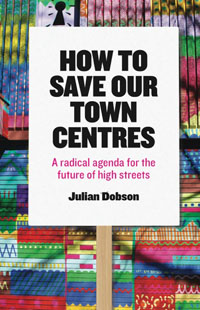Christmas trading results confirmed the inexorable move to online plus another problem for struggling retailers – the gulf between ‘bricks ‘n mortar’ retailers who sell online and the ONLY online retailers like AO. Marc Bolland, boss of M&S did the decent thing and threw himself onto his sword when sales crashed 5.8% and the ‘Big Four’ supermarkets all warned of falling like-for-like sales despite improved online performance.
The big winners seem to be the ONLY Online retailers like AO who don’t have any Bricks ‘n Mortar presence
But card issuers like Visa and MasterCard confirmed turnover was UP by 2% – so the difference must have gone somewhere if not into the Big Four’s websites. The two usual suspects are German – Aldi and Lidl – but their sales turnover is still far too small to represent the difference. The big winners seem to be the ONLY Online retailers like AO who don’t have any bricks ‘n mortar presence. They reported a staggering 31% increase in sales – better even than Aldi could achieved. Admittedly much of this was in white goods rather than groceries but it still hurt the big boys efforts to diversify from groceries and household into durables. Changed shopping habits have now impacted on supermarkets just like they on markets when they introduced self-service.
The markets industry still remains predominantly cash-only and ignores the websites and plastic which fuelled the switch.
But if you’re a small retailer don’t take too much pleasure from watching ‘the biter bit’ until you’ve done your own reality check. The markets industry still remains predominantly cash-only and ignores the websites and plastic which fuelled the switch.
With over 80% of groceries and household goods sold by four companies the move online (and to those Germans) has left the big four with some very expensive property liabilities. They’ve been shelving projects and offloading poor performers sites as fast as possible but are left with the dilemma of who will buy them. The obvious purchasers are suffering as much as they are and anyway a vendor will inevitably slap a restrictive covenant on the title to prevent a competitor using it for retail. The clever money is now in redeveloping supermarket sites for housing – very much in line with government policy. The UK is OVER-provided with supermarkets but UNDER-provided with houses. Say Goodbye! to Asda and Hello! to Acacia Avenue.
Big retailers are seeking other ways to diversify and maintain profits whilst reducing their property costs
Small wonder then that big retailers are seeking other ways to diversify and maintain profits whilst reducing their property costs. Tesco tried with their new ‘Fresh ‘n Easy’ chain in the USA (which was a disaster) and still try to fill underused UK space with Harris & Hoole coffeeshops. Not that it’s had much effect – the H&H promos show suntanned South California beach babes with perfect teeth, not Tracey from the Mudford-on-Sea checkout.
Buying Argos and slotting their stores into Sainsbury units could save a lot of operational costs for both
One would-be diversifier is Mike Coupe, the dynamic new CEO of Sainsbury. He’s has been sniffing around the Home Retail Group, owners of Argos (and until recently Homebase DIY) to fill underused space in his stores. His rationale is that Argos has excellent home deliveries, a complementary offer and ‘mature’ property portfolio which would be cheap to offload. Buying Argos and slotting their stores into Sainsbury units could save a lot of operational costs for both and provide Argos ‘Click and Collect’ in Sainsbury convenience stores. Well that’s the theory anyway, but the secret is out. Home Retail shareholders are playing hard to get and have just sold off Homebase DIY to the Aussie retail group Wesfarmers to boost the share price. Mike will have to pay a lot more than he wants and seems to have cold feet. Watch this space.
After ‘Black Friday’ we had ‘Cyber-Saturday’ and now ‘Blue Monday’
And finally: the latest stupid-sounding name which no-one really understands. After ‘Black Friday’ we had ‘Cyber-Saturday’ and now ‘Blue Monday’ – the third Monday in January. This is – allegedly – the most depressing day of the year. Travel agents use it push February Citybreaks for WizzAir which sound like a steal with four romantic nights for two in Riga for £200 – flights, half-board and transfers included. Why Latvia in February? It’s perishing cold but their markets are housed in former Zeppelin airship hangars. It all seems slightly more funky than Mudford.
Unfortunately the name lives on but can be ignored by everyone in the Markets industry
‘Blue Monday’ was invented by the TV channel Sky Travel back in 2005 to drum up interest in their holiday offers but didn’t work too well. It’s owners, BSkyB closed them down after 5 years due to ‘intense internet competition’ which sounds familiar. Unfortunately the name lives on but can be ignored by everyone in the markets industry.
We already know about the kipper season – which, of course is NOT a stupid name.




